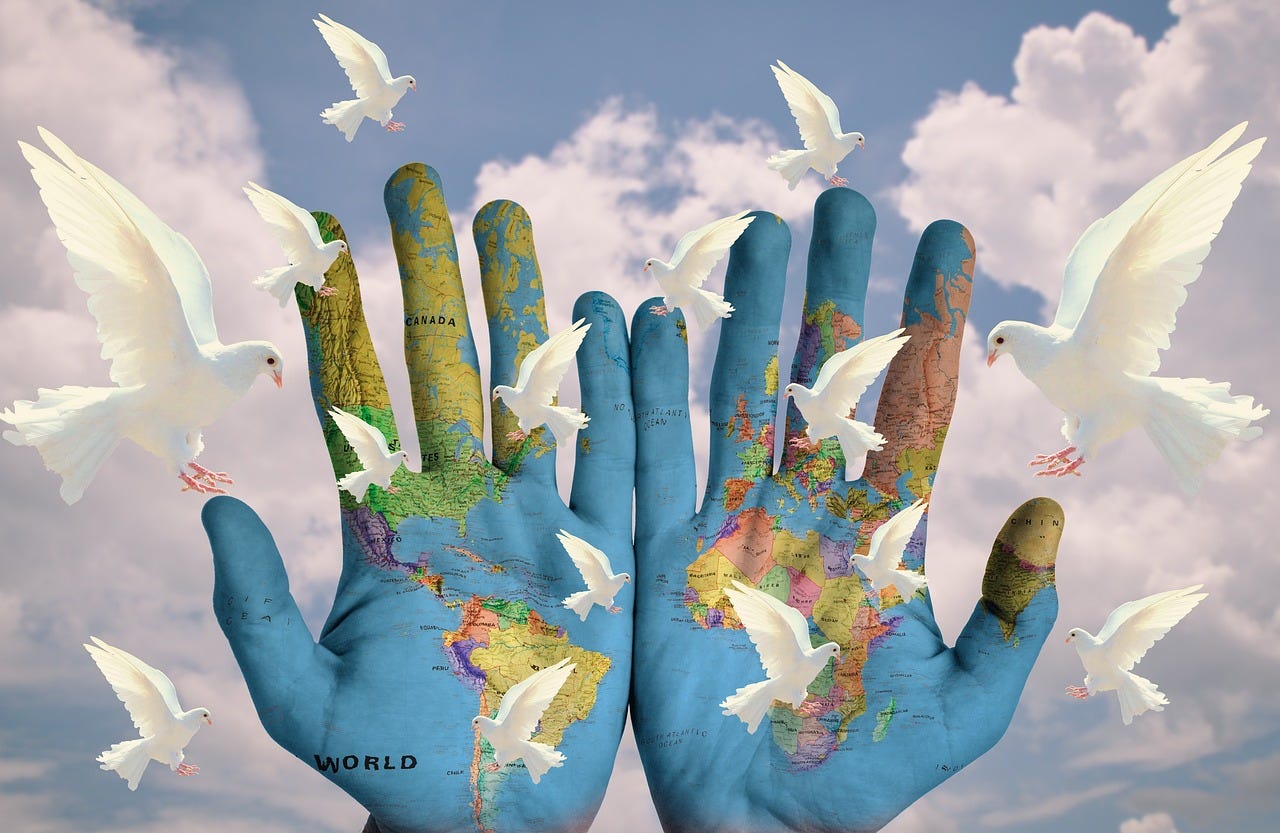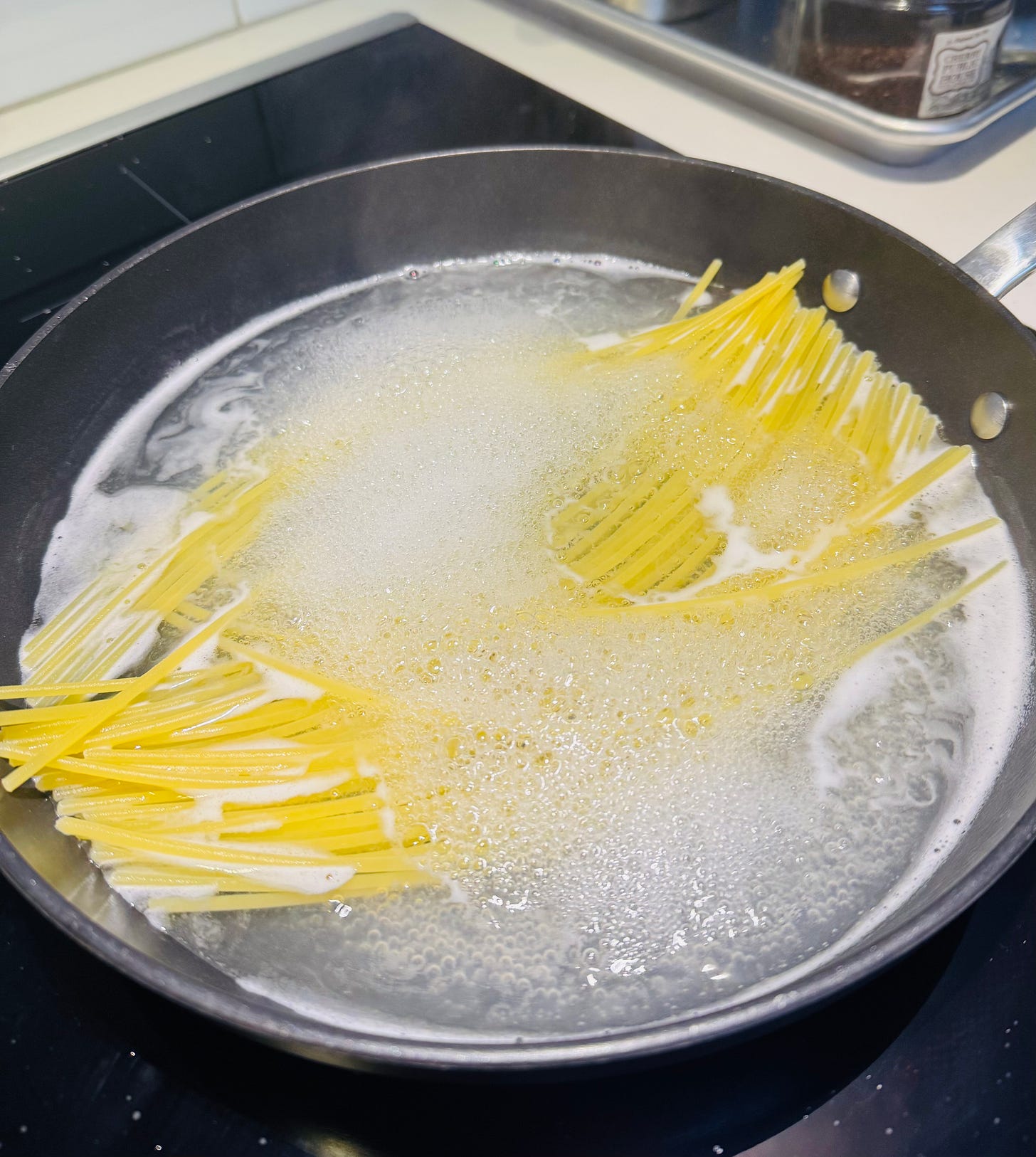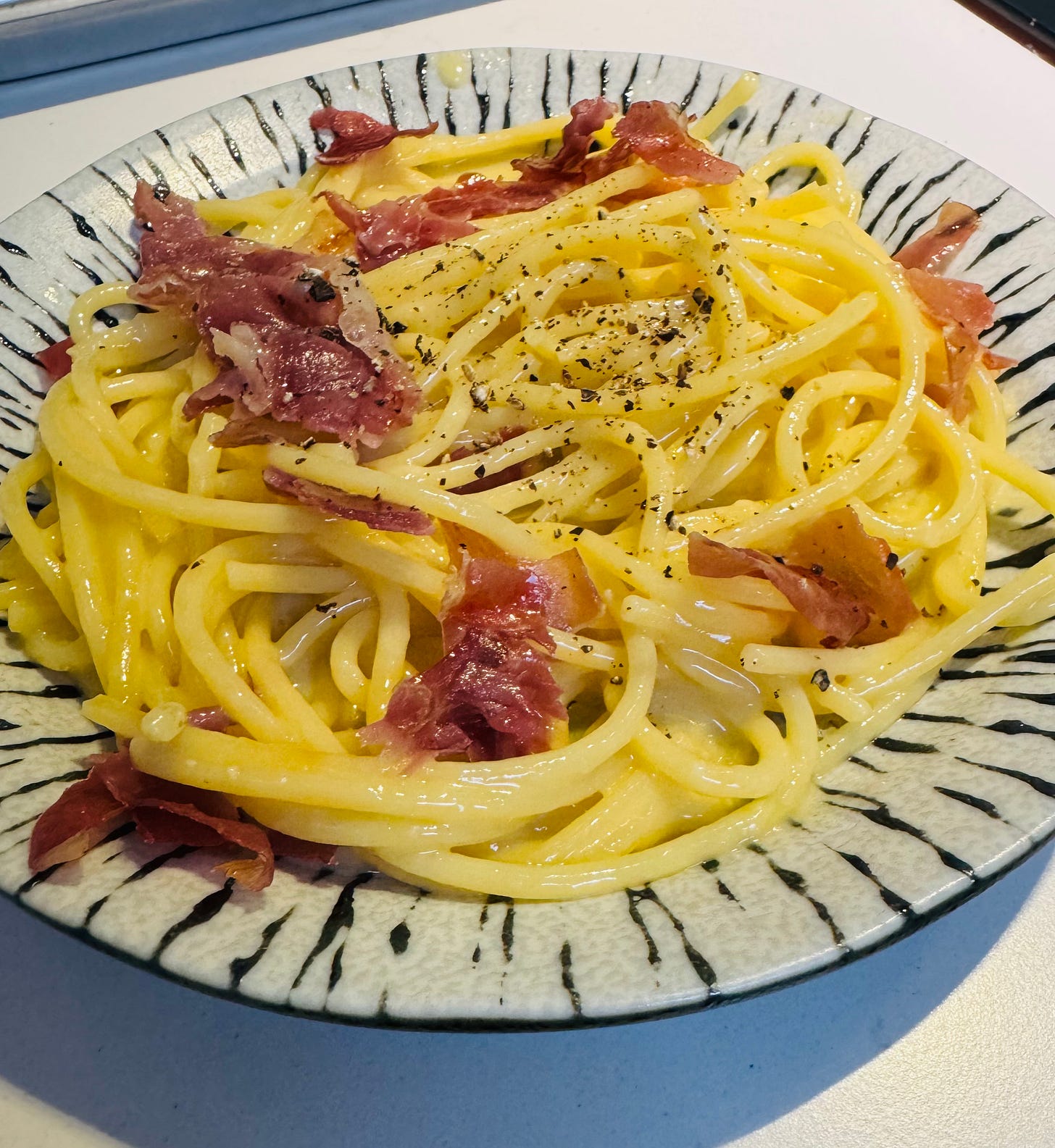Last Meal
This week I ponder what I"d like to eat as my last meal. It's a bit of folly during a time of significant world hunger, turmoil and upheaval. May you read this and ponder your own choices in peace.
A friend, I’ll call her E for this post, asked me a couple of weeks ago, kind of out of the blue, what I would choose as my last meal on earth.
We didn’t talk about the reasons we might be eating our last meal. That part remains a mystery.
But E knew. She’s given it lots of thought.
I had no answer. I was completely stumped.
E’s choices for her last meal on earth are:
Steak Frites served with a Malbec
Pasta Amatriciana
Peach pie for dessert
Doesn’t this sound perfectly starchy and decadent? A proper last meal in my view.
Over the past few weeks, I’ve found myself pondering the decision about what my last meal on earth would be as if my life depended on it.
Luckily it doesn’t.
The food shortages in Ukraine, along with the near famine in Sub-Saharan Africa and Gaza are startlingly scary. If we have to endure war and divisiveness wouldn’t it be nice of the governments could just duke it out amongst themselves and keep us out of it? That innocent populations face starvation in addition to the horror of warfare is not only cruel, it is downright inhumane.
History shows us that food has been weaponized since the beginning. According to Oxford Research Encyclopedias:
The use of food as a weapon is as old as written records. Siege, blockade, and starvation are well-documented military strategies, as are political strategies that use food as a tool to attract supporters and dissuade opposition.
Because the destructive impacts on human health, environment, economic livelihoods, and societies endure for decades to come, the concept of “food as a weapon” can be broadened to “food wars,” which encompass connections between food insecurity and conflict in both directions.
Here, in America, where amber waves of grain sway above fruited plains, people face food insecurity in 100% of our counties nationwide. That is beyond disturbing.
People of all races and ethnicities struggle with food insecurity in America. But, according to Feeding America, “it is more common for people of color because of the long history of racism and discrimination in the United States.” Additionally, “Millions of people in America are just one job loss, missed paycheck, or medical emergency away from hunger.”
I count myself extremely lucky to have grown up in a home where I had abundant food, safe shelter, and two attentive, loving parents. I have never known poverty or food insecurity.
Long before I carried a smart phone, I carried a calculator to the grocery store so I could keep a running tab on how much everything cost. In those days, when my son was young and our expenses were growing, I had to shop carefully for groceries. I often put items back on the shelf because they were too expensive even though I almost always bought generic brands. Grilled cheese sandwiches and pancakes made frequent appearances for dinner.
I’ve often written about how hungry I am in the mornings, that I basically can’t wait more than a few minutes to start eating breakfast after waking up. But First Breakfast is not just the name of this Substack. It is the motto by which I live.
But my morning hunger is a different kind of hunger than being out of work, not knowing where your next meal is coming from. It’s also very different from living through an invasion by a rival government. War destroys. War displaces people and inevitably weaponizes food.
This picture, from December 4, 2024, illustrates the severity of food shortages caused by war.
Palestinians gather to buy bread from a bakery in Khan Younis in southern Gaza. [Mohammed Salem/Reuters]
We all know this picture. We know it too well. This picture could have been taken in Chad or Yemen or Myanmar.
So when I said earlier that I’m lucky my life doesn’t depend on my last meal, this is what I meant. These people are fighting to stay alive, walking many kilometers in hope of finding something, anything to eat in a country decimated by war.
In the face of these tragedies, I’ve been contemplating what my last meal on earth might be.
I am well aware how trivial and insignificant this exercise is. But right now, when world events are too overwhelming and downright anxiety producing, thinking about what I’d like as a last supper has provided some much needed daydreaming.
My first thought was that I might choose something closer to breakfast than dinner since breakfast is my favorite meal of the day. But if I’m forced to choose my last supper, after much decision making, here’s what it would be:
A cold as ice gin and tonic
Oysters on the ½ shell if in season. A second choice would be Maryland blue crab or soft shell crab if they’re in season. Otherwise, a crab cake, made with lump meat will more than suffice
Fettuccine Alfredo
A perfectly roasted, crispy, lemony whole chicken that I could pick apart with my hands, served in a wide shallow bowl where the pan juices could collect
A warm baguette, or demi-baguette, for dunking into those collected juices.
Ina Garten’s roasted applesauce.
Chocolate Layer Cake
When it came to deciding on dessert I struggled. It was a tough choice between a chocolate layer cake or cheesecake. I landed on the chocolate cake since the Alfredo is loaded with cheese. And really, if I have to go–and don’t we all–the last morsel on my lips must be chocolate.
All this pondering got me thinking about that Fettuccine Alfredo, one of my favorite dishes ever.
You may have already put two and two together. Yup, you guessed it. I made some pasta for breakfast, Spaghetti Carbonara to be specific
I’m trying to use up an open box of spaghetti, and since I had prosciutto, not guanciale, that’s what I used. There is almost always a hunk of Parmigiana Reggiano in my refrigerator which grates up in no time. But the trick to making this dish is cooking the pasta in a skillet rather than a saucepan.
Why? It’s the starch released from the pasta as it cooks that helps the sauce thicken. Cooking the pasta in a skillet with just enough water to cover ensures that there will be enough starch to hold the egg and cheese together.
Spaghetti Carbonara for One:
Ingredients:
60 grams of dried fettuccine or spaghetti
1 slice prosciutto
1 egg
28 grams, about an ounce, grated Parmigiana Reggiano
HOW TO:
1. Place dried pasta in a skillet large enough for it to fit flat. Add just enough water so that the pasta is just barely covered. Cook over high heat for about 8-10 minutes, until the pasta is just cooked through. It should be firm but not have any crunch when you taste for doneness.
2. In a small skillet, crisp the slice of prosciutto, like you’d cook a piece of bacon, over medium heat. Once it’s crispy on both sides, remove it from the skillet and set aside. Keep skillet nearby.
3. While prosciutto and pasta are cooking, crack egg into a bowl and beat until white and yolk are blended.
4. Grate the cheese and place into a bowl
5. Once the pasta is sufficiently cooked, remove it to the skillet using a pair of tongs. DO NOT DRAIN THE PASTA!
6. Add about ¼ to 1/3 cup of the starchy pasta water to the skillet and turn the heat to low. Add the beaten egg and quickly stir it into the pasta. You want to coat the pasta and just warm the egg through without scrambling it. Keep stirring with the tongs and add the cheese. If you think it needs more pasta water, add it in small amounts just until the sauce thins out. Again, you’re trying to coat the pasta evenly.
7. Remove pasta from skillet to a small bowl or plate. Crumble the crisped prosciutto on top, grind black pepper on top and enjoy for breakfast or anytime.







